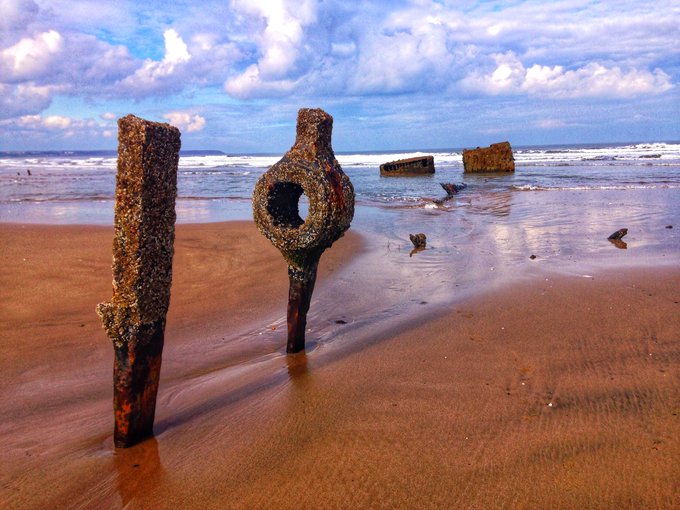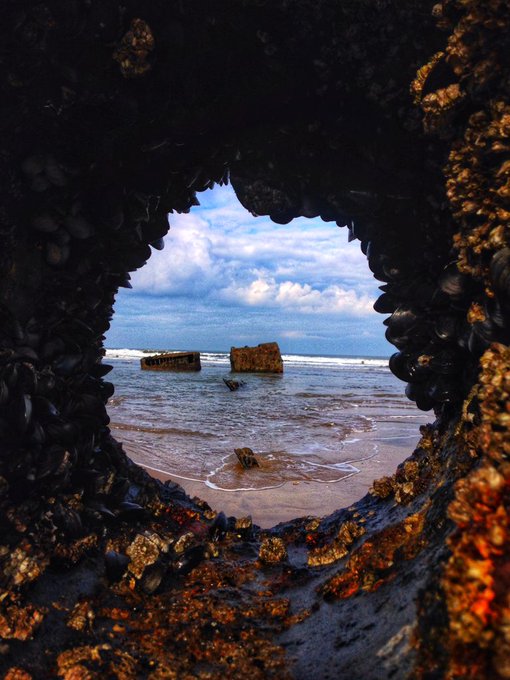May-2020
The Shipwrecks of Speeton Sands
Beneath Bempton’s towering cliffs lie the barnacle encrusted remains of a ship. A huge boiler appears from the waves as the tide recedes. However, the most haunting part is the eyelet where the ship’s propeller once turned. It’s watery finger points skyward. A warning of the perils of the sea? A grave marker of a long lost ship?
It is a long walk to Speeton Sands from Filey. It is wise to study the tides times carefully. However, it is a rewarding walk. The pristine white sands have few footprints even at the height of summer. Being beneath the chalk cliffs is a sensation in itself, but it is the scattered remains of several ships that give the location a strange charm.
At first glance it is difficult to discern the wrecks from rocks. Nature is slowly reclaiming the ships. The first discernible remains are those of the collier the Laura. Once thousands of these ships carried coal from the north eastern coalfields to ports all across the world. The Laura was carrying a cargo of coke from Newcastle to Trieste when she ran aground in 1897 in thick fog. The Laura was an Austrian owned ship. This might appear surprising today, as Austria is a landlocked country, famous for its snow capped mountains rather than tales of the sea. However, prior to the Great War, the port of Trieste was part of the Austro-Hungarian Empire.
Around 10am on the morning of 21 November 1897 she ran aground, her calls for assistance were answered by the Filey lifeboat and a couple of fishing cobles. However, the captain of the Laura decided to remain aboard and attempt to refloat the ship on the high tide. Unfortunately those attempts failed and so her cargo of coke was offloaded onto the beach. By now tugs had arrived to attempt to pull her off the sands. Two of the tow ropes broke in the attempt and the Laura shifted position and her back was broken by the tide.
The twenty-four man crew abandoned the ship and the Laura was left to the salvagers and the elements. A large part of the ship was cut up for scrap, but her two boilers and stern post are still clearly visible at low tide over a century on.

The wreck of the Laura
Further beneath the cliffs are several other wrecks, whose histories we shall explore in the coming days. Speeton Sands is an alluring place, but it is worth reiterating that it is wise to check the tides before venturing out.
The maritime history of Filey Bay is fascinating and dramatic. Our friends at Filey Bay Initiative are continuing their extensive research and their website is a treasure trove. Their work on the Bonhomme Richard in particular seems set to bring huge benefits to Filey. It is a shame that the pandemic has caused their regular meetings at the White Lodge Hotel to be put on hold. Hopefully, we will be able to report on their return in the very near future.

comment this post

Good evening to you and we hope that you are keeping safe.
Can I point out a small discrepancy please? In your piece you link the filey bay Initiative with http://www.fileybay.com and suspended meetings at the White lodge hotel filey due to the current situation.
We are the filey Bay Bonhomme Richard Group and have no connection whatsoever with the Filey Bay Initiative, who pursue different line of work.
Kindest regards to you,
Anthony Green
Any details about the galleon that was at bottom of the cliffs near the flower of may camp ? I remember going to see it as a little girl. Is it still there?